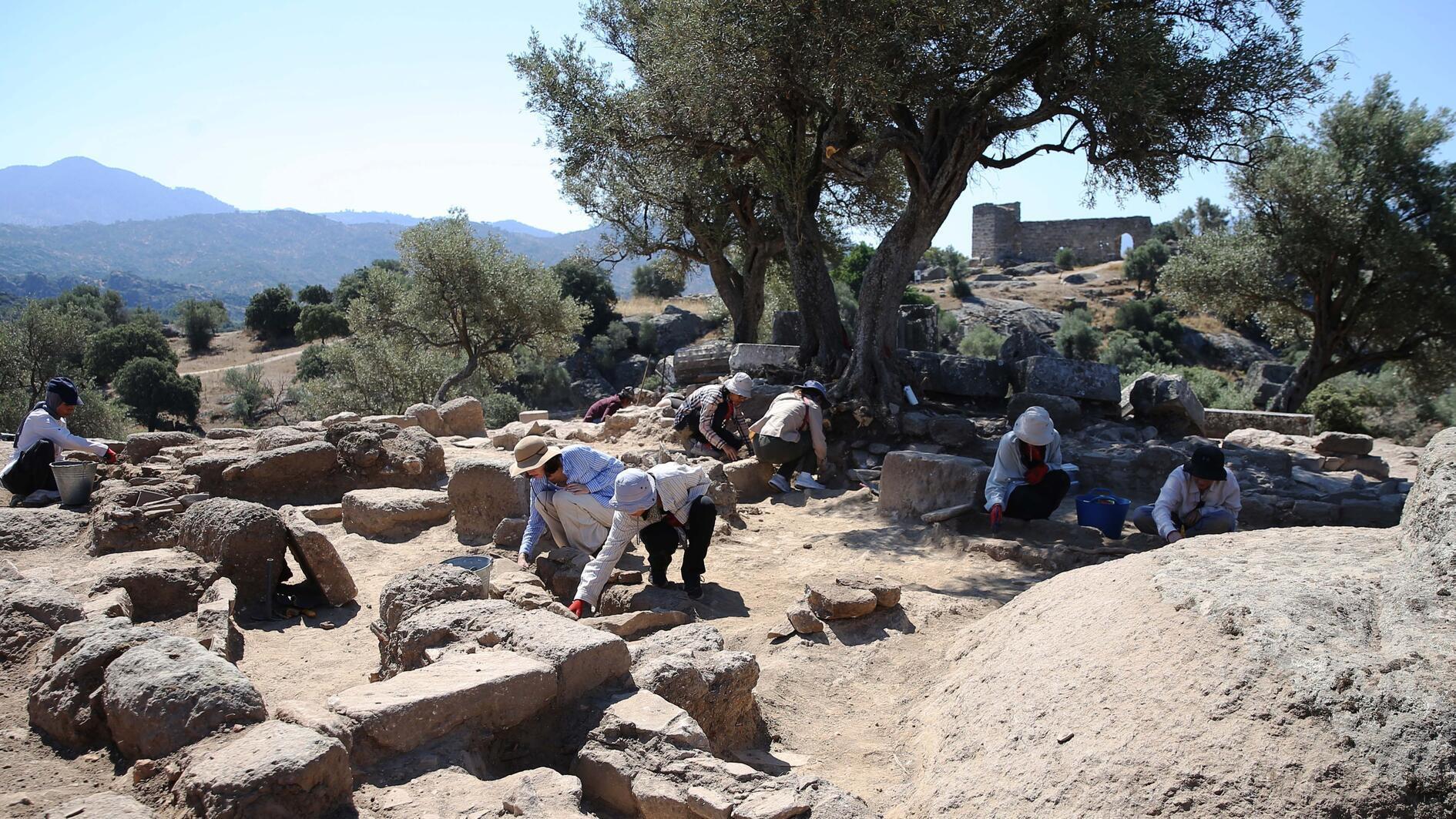
Excavations in the ancient city of Heraclea near the southwestern town of Milas have uncovered many Byzantine-era graves of children and adults, as well as burial goods, archaeologists have announced.
Located on the southern slopes of the Latmos Mountains, a region known for its dramatic geological formations, Heraclea is being explored as part of the “Heritage for the Future” archaeological initiative. The excavations are led by Professor Zeliha Gider Büyüközer of Selçuk University’s Department of Archaeology.
Speaking to the state-run Anadolu Agency, Büyüközer said a newly excavated structure, dubbed the “Doric building” due to the presence of Doric-style marble architectural blocks on its façade, revealed the remains of a large church. After its use as a place of worship ended, the church and the area in its north appear to have been repurposed as a necropolis.
“In the upper layers, we found graves mostly belonging to children aged 0 to 14,” said Büyüközer. “As we dug deeper, we encountered adult burials.” Among 10 child graves, six belonged to infants aged between 0 and 1, with the rest showing varied age ranges.
Some graves were built directly on top of the church’s walls, indicating that the site was used as a burial ground well after the building was abandoned. In several instances, archaeologists discovered double burials, including one where two skulls were found side by side. In this case, the skeleton of the first individual had been pushed toward the foot of the grave, leaving only the skull in its original place, while the second individual was laid next to it later.
“This clearly points to the practice of secondary burials or double interments,” Büyüközer said.
Grave goods were also uncovered, especially in child burials, where single jewelry pieces were found placed as offerings. Ongoing excavations suggest that the site may have served as a burial ground during a time of widespread illness.
“The prevalence of child graves might indicate an epidemic that particularly affected younger individuals,” Büyüközer said.
So far, 21 graves have been excavated in the area, and the number is expected to increase as the work continues.
Excavations at Heraclea have also recently concluded at a Roman bath complex, while investigations are ongoing near the nearby Temple of Endymion. The findings shed new light on the multilayered history of the region and its continuous use across centuries.